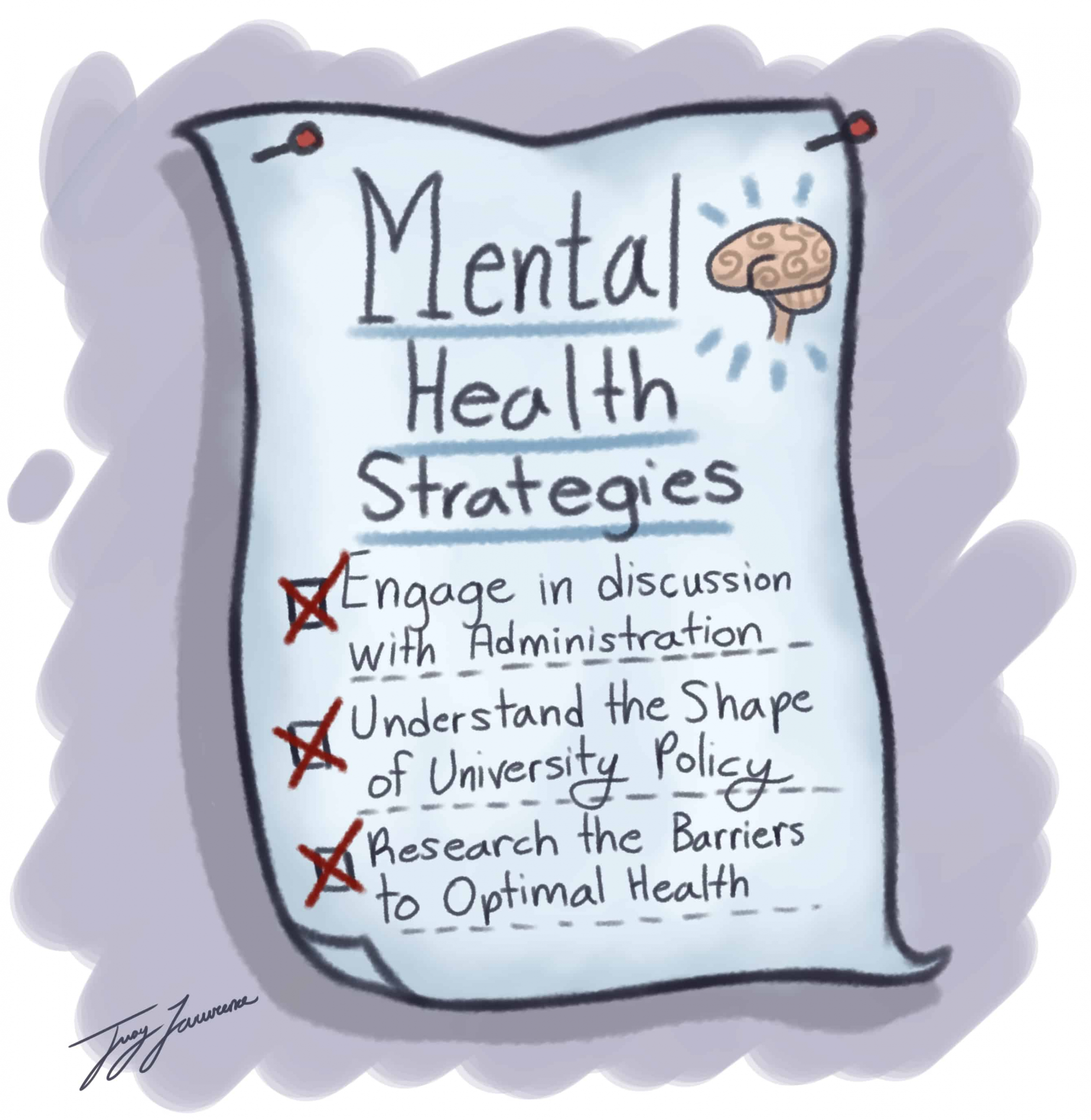Many students are aware of Canada’s startling mental health statistics. One in five Canadians are likely to experience a mental illness or addiction problems in any given year, and youth aged 15–24 are at greatest risk. For these youth, suicide is one of the leading health-related causes of death.
Given that mental health has become an increasingly prominent topic of discussion on postsecondary campuses and in the media over the past few years, one could argue that we have already made significant progress in reducing the stigma surrounding mental health and mental illness. With numerous student groups offering peer support sessions, destressing activities, and open spaces to share personal experiences with mental health struggles, it would seem that the mental health landscape for postsecondary students is improving.
However, widespread opposition toward U of T’s recently approved university-mandated leave of absence policy suggests that we still have a long way to go before students’ needs are adequately met. It seems to be common knowledge that our campus mental health services are lacking, and that student advocacy is required if we wish to see improvements to this system. What this advocacy looks like remains a vital question.
At Jack.org, a Canadian charity that trains and empowers youth to dismantle barriers to positive mental health through education and advocacy initiatives, volunteers like me typically look at two categories of barriers: cultural and structural.
As many young mental health advocates do, I initially gravitated toward addressing the cultural barriers to positive mental health, with a focus on stigma reduction and promoting mental health education. These initiatives do enhance our ability to identify potential struggles and make us more likely to reach out for social or professional support, but they do not address the fundamental gaps in how institutions support student mental health.
This is where structural barriers come into play, and this is where student initiatives and advocacy are currently lacking. In order to enact system-wide changes, we need to understand that mental health advocacy is not just a social endeavour, but also a political one. Students must therefore voice their concerns and recommendations, not just to each other and online, but to student unions, faculty, and administration. For example, if we want to advocate for improved access to counselling services, we should encourage collaboration between student groups, societies, and unions to lobby administrators and contribute to discussions surrounding policies and funding.
Despite the likelihood that significant improvements to our university’s mental health framework may take years to materialize, there are several actions we can take as students to incrementally improve our local mental health landscape. These range from developing resilience and stress-coping mechanisms to learning how to support peers in distress.
For students who want to get involved in mental health advocacy or contribute to student wellbeing on campus, they can join youth movements such as Jack.org and contribute to ongoing efforts to improve the mental health landscape, not only on campus, but at a provincial and national level. However, if they are entering the advocacy field, a critical approach must be taken in order to truly be impactful.
Research into identifying barriers to positive mental health is necessary and student initiatives should be planned in such a way that addresses these barriers directly. Although on-campus counselling services are often associated with long wait times, there are several external and online resources from which students may benefit. However, these are often poorly marketed to students. Therefore, Jack.org UofT developed a categorized resource brochure in collaboration with the University of Toronto Students’ Union, which printed over 2,500 copies to be distributed during orientation week in 2017.
Similarly, the University of Toronto Graduate Students’ Union recently collaborated with the School of Graduate Studies to establish a Graduate Wellness Portal with a tri-campus resource directory. These resource directories serve as examples of small-scale initiatives that address a specific barrier to accessing mental health services — namely, the lack of marketing of resources to students.
This is in no way a call to abandon advocacy efforts targeting stigma reduction and cultural barriers related to positive mental health. These efforts are necessary both on and off campus to shift public opinion and promote help-seeking behaviour among folks who may be struggling with their mental health.
Instead, this is a call to action for students to be more critical about how we approach the topic of mental health on campus, and that we engage in initiatives, not because they seem well-intentioned, but because they will lead to impactful and measurable changes in the mental health landscape on campus and in our communities.
Daniel Derkach is a master’s student at the Institute of Medical Science. He was the 2017–2018 Chapter Co-Lead for Jack.org UofT.


